Rapa Nui National Park of Easter Island
The Rapa Nui National Park on Easter Island is a UNESCO World Heritage site that emphasizes the rich history of the Rapa Nui people. They began a tradition of building impressive sculptures and structures that were not influenced by outside cultures. This tradition lasted from the 10th to the 16th century. During this time, they created shrines and large stone figures called moai. This work led to a remarkable cultural landscape that continues to interest people around the world.
Rapa Nui, also known as Easter Island, has a unique cultural history. Around A.D. 300, a group of Polynesians settled on the island. The park is best known for its famous moai statues, which were created by these islanders. It encompasses a large portion of the island and features many historical sites, volcanic craters, and stunning coastal views. The moai statues showcase the incredible talent and cultural significance of the Rapa Nui civilization.
Table of Contents
Where is Rapa Nui National Park, Easter Island Located?
Rapa Nui National Park is on Easter Island, which is part of Chile in the southeastern Pacific Ocean. Easter Island is the farthest inhabited island on Earth, located 3,700 kilometers from the coast of continental Chile and covering 16,628 hectares. This World Heritage site includes about 7,000 hectares, which consist of four nearby islets. The park features a large area of the island, including historic sites, volcanic craters, and beautiful coastline views. It is a great place for those interested in history and nature.
Inscription
In 1995, UNESCO added Rapa Nui National Park to the World Heritage List because of its outstanding value. This recognition highlights the rich heritage of the Rapa Nui people and their impressive moai statues, which show their cultural and artistic skills. This acknowledgment emphasizes the park’s role as proof of human creativity, resourcefulness, and the relationship between people and their environment.
What is the meaning of Rapa Nui?
Rapa Nui is the name for both an island and its native people. It refers to Easter Island, which is located in the southeastern part of the Pacific Ocean. In the local language, “Rapa” is thought to mean “island” or “land,” while “Nui” means “big” or “great.” So, Rapa Nui can be understood as “Big Island” or “Great Island.” The island is well-known for its large statues, called moai, and has a rich history and culture.
What is the history of Rapa Nui National Park?
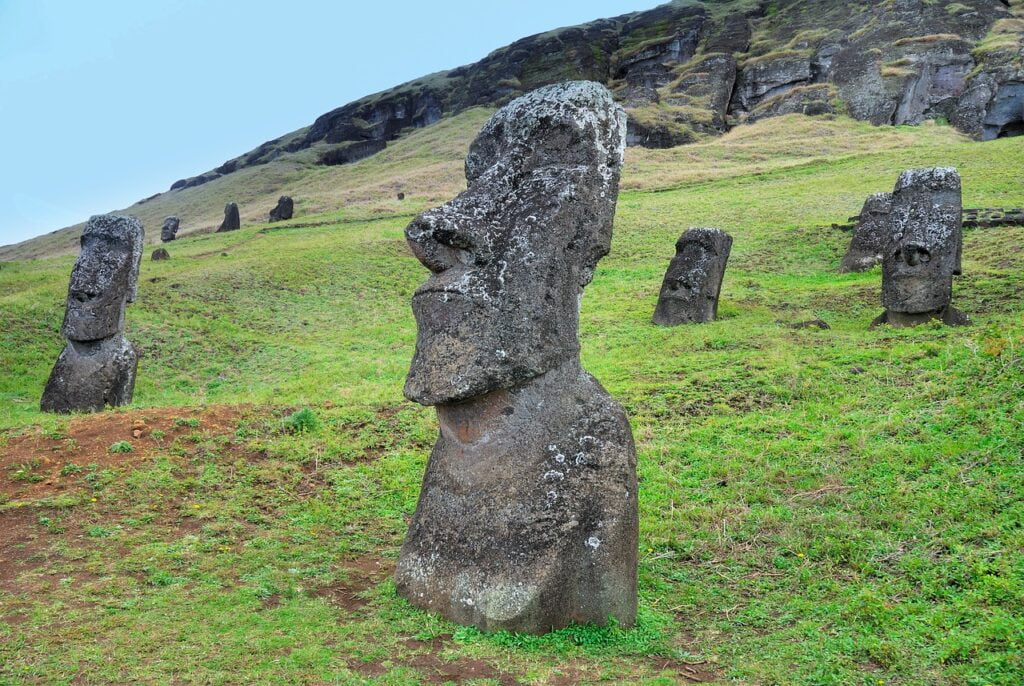
Rapa Nui National Park encompasses about 40% of Easter Island. It has many important archaeological sites, including around 900 statues and over 300 ceremonial platforms. The park also has structures related to farming, burial ceremonies, housing, and other activities. Easter Island is a protected wildlife area in Chile. A small group from Eastern Polynesia settled on the island around the end of the first millennium. Their culture thrived from the 11th to the 17th centuries, creating remarkable structures like ceremonial platforms (ahu), carved moai statues, and large statues of their ancestors.
Some research indicates that the Rapa Nui civilization began to decline by the 16th century due to ecological issues and reduced natural resources. This decline led to the destruction of their large monuments and a change in spiritual beliefs. The original practice of ancestor worship shifted to the worship of the man-bird, as seen in the ceremonial village of Orongo situated at the Rano Kau volcano. Orongo is a special ceremonial village that stands out because of its unique location and design. While it might not be as well-known as other places, the homes and buildings used for various purposes here are quite fascinating.
The population of Rapa Nui dropped to just over a hundred people because of colonization, the introduction of animals, the detention of the original inhabitants, foreign diseases, and especially slavery. Today, the island has a mixed population of descendants from the ancient Rapa Nui and various immigrant groups.
Rapa Nui National Park showcases a unique civilization that collapsed due to environmental disaster and outside influences. The important remnants of this society blend with the natural environment, creating a cultural landscape like no other. The park is home to an exceptional cultural phenomenon. For over a thousand years, this society lived in isolation from outside cultures, developing its own strong artistic and architectural traditions.
What is the Moai Statue?
The moai are important archaeological artifacts. The Moai Statues are large stone figures found on Easter Island, also known as Rapa Nui, in the Pacific Ocean. The Rapa Nui people created these impressive statues between the 10th and 16th centuries. The Moai have oversized heads, which show their connection to ancestor worship and reflect their culture’s respect for their ancestors. Most statues are carved from volcanic tuff and can weigh several tons. They vary in height from 2 to 20 meters and are mainly made from yellow-brown lava tuff. Builders used tools called toki, made from hard basalt, to craft the statues.
Originally, the moai were placed on stone platforms called “ahu,” which acted as tombs for the people they represented. The size and shape of the ahu can differ, with the largest being Ahu Tongariki, which has 15 moai. There are different types of moai: some are carved, some are moved to their final spots on the ahu, and some are taken down and rebuilt. The moai were believed to have spiritual power, providing protection and prosperity to the community.
Today, the Moai stand as profound cultural and historical icons of Easter Island, celebrated as a UNESCO World Heritage Site. They draw visitors from across the globe, all captivated by the rich history and the mystery surrounding their creation and transportation.
What is the history of the Moai Statue?
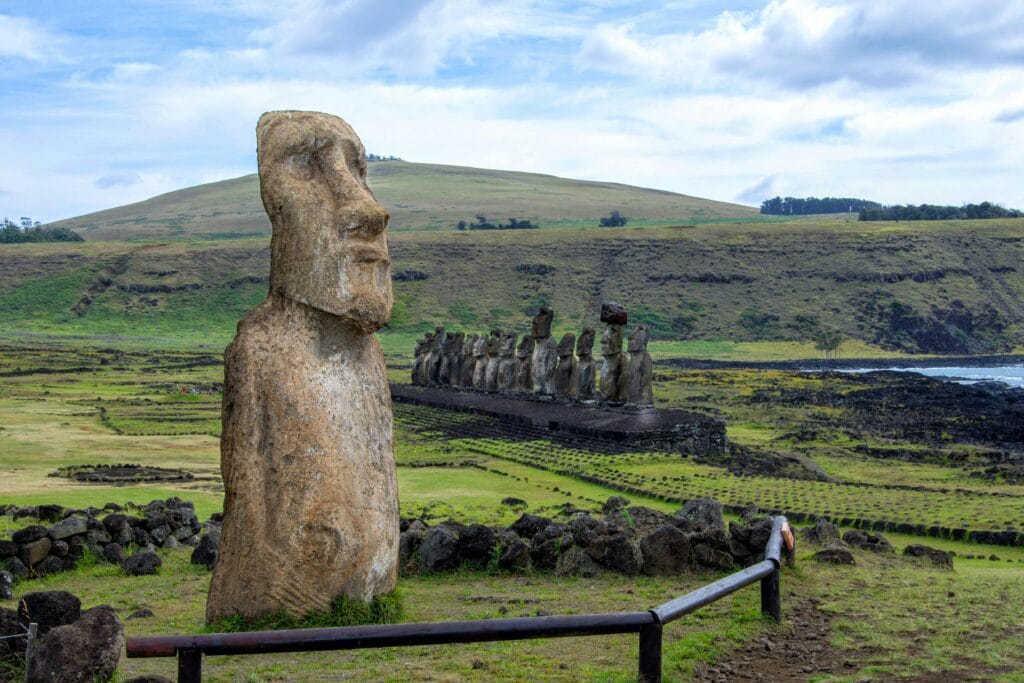
The Moai statues are one of the most iconic symbols of Easter Island, known as Rapa Nui in the native language. The Rapa Nui people built these large stone figures between the 10th and 16th centuries. They created the Moai mainly to honor their ancestors and important community members, believing the statues held their spirits. Most statues were made from volcanic tuff, which they cut from the Rano Raraku volcano, the main place for making Moai. The quarries, like Rano Raraku, help us understand how the carving process worked.
The Moai statues were moved to different sites on the island, mainly on platforms called Ahu. Larger Moai represented more important figures, with some being around 32 feet tall and weighing over 80 tons. Building and transporting the Moai reflected the social structure and spiritual beliefs of the Rapa Nui people.
By the late 19th century, many Moai statues were destroyed due to conflicts, colonization, and slave raids. Today, efforts are being made to protect these important cultural artifacts, which showcase human skill and social structure. The Moai are now a UNESCO World Heritage Site and draw in researchers and tourists who are intrigued by their history and the mysteries of Rapa Nui culture.
What is the Rapa Nui National Park famous for?
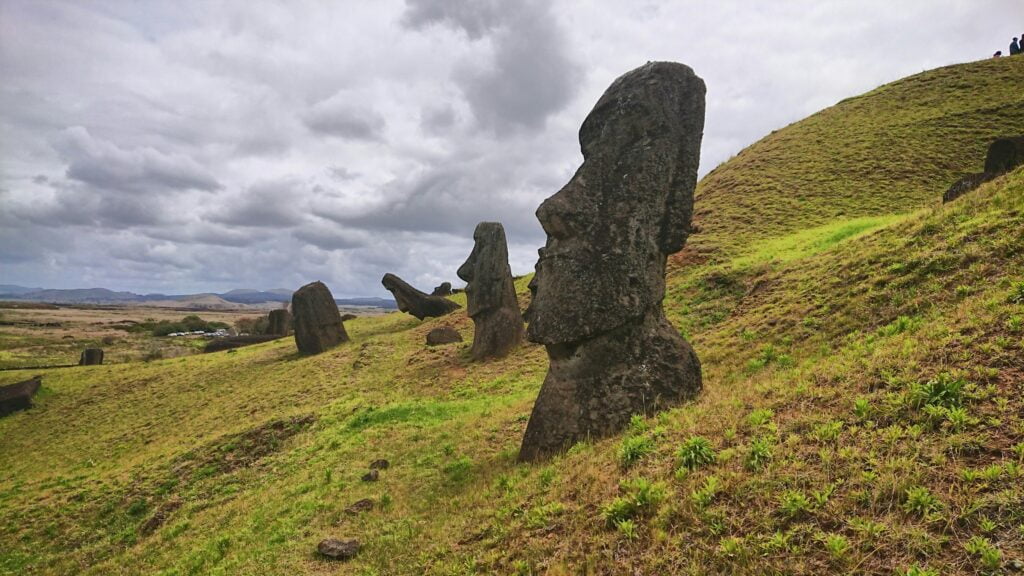
Rapa Nui National Park is celebrated for its iconic moai statues, which are impressive stone figures crafted by the Rapa Nui people from the 10th to the 16th centuries. The park covers a large part of Easter Island and is home to many archaeological sites, ceremonial platforms, and breathtaking natural scenery. It is also a UNESCO World Heritage site that showcases the rich cultural and historical importance of the Rapa Nui civilization.
Preservation of Rapa Nui National Park
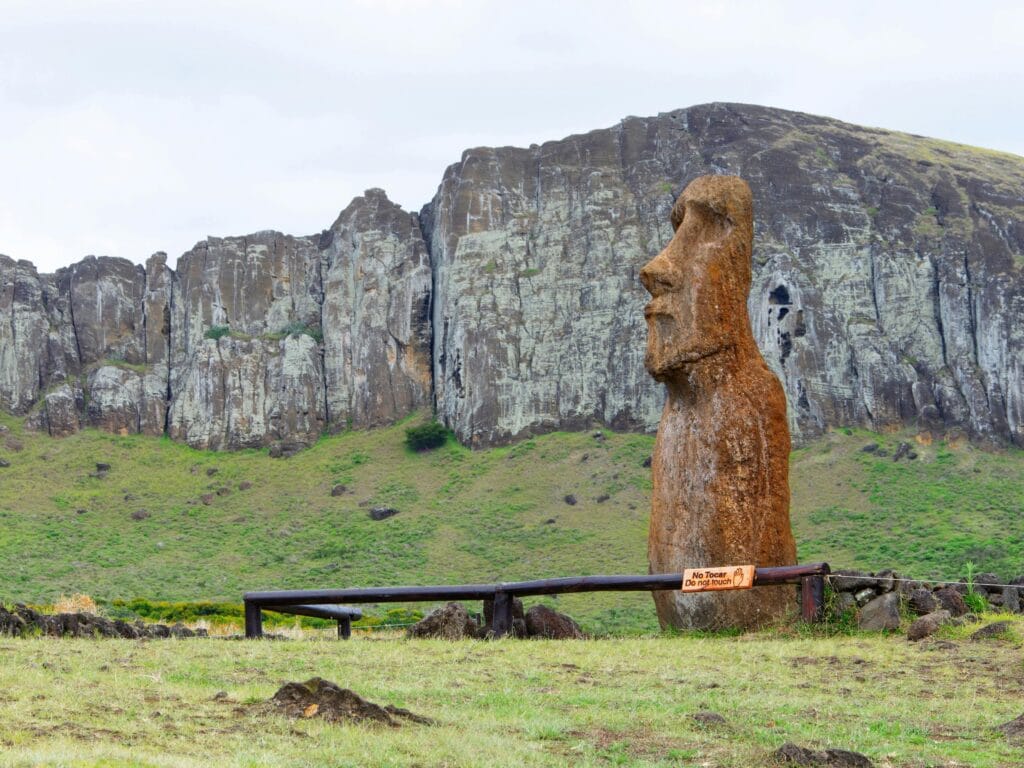
Rapa Nui National Park has two official protections. First, it became a national park in 1935, managed by Chile’s National Forest Service (CONAF). Second, the entire island was declared a National Monument in 1935, and the nearby islets were designated as such in 1976. Rapa Nui National Park needs to be preserved to protect its unique culture and nature. Efforts include preserving the moai statues and important archaeological sites to prevent damage from weather and erosion. Local and international groups work together to promote sustainable practices and educate about the park’s significance. These actions are vital to maintain the Rapa Nui people’s heritage and keep this UNESCO World Heritage site intact for the future.
Why should you visit Rapa Nui National Park as a visitor?
Visiting Rapa Nui National Park is a unique experience that offers a glance into the wealth history and culture of the Rapa Nui society. The park is home to the famous moai statues, which are stunning representations of ancient craftsmanship and spirituality. You can explore breathtaking landscapes, including volcanic craters and beautiful coastlines, making it a great destination for nature lovers.
Additionally, the park provides insights into the island’s archaeological sites and the fascinating story of a civilization that thrived in isolation. Whether you’re interested in history, art, or simply enjoying stunning views, Rapa Nui National Park has something for everyone.
Do you want to learn about the unique traditions of the Rapa Nui people and Moai Statues?
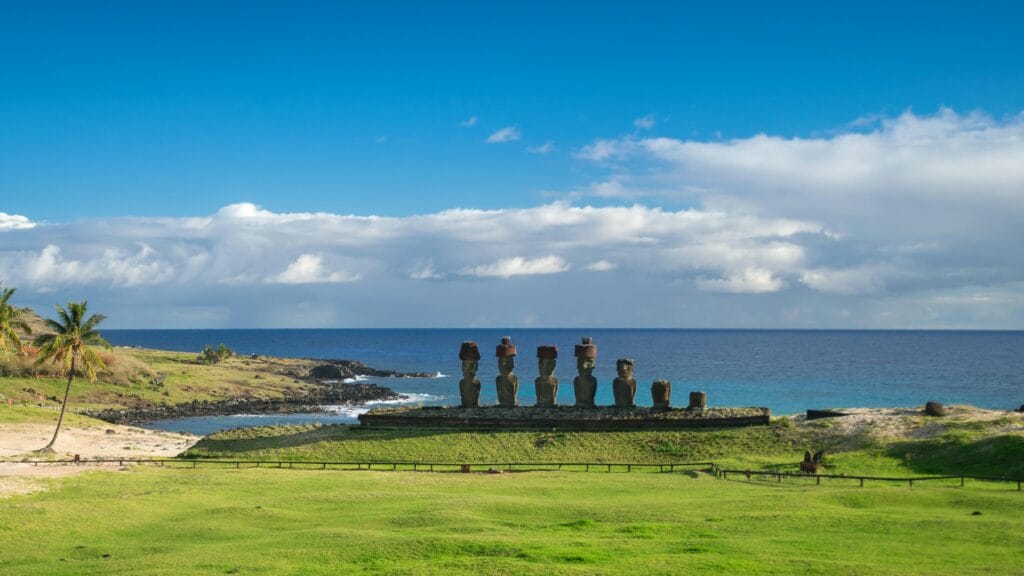
Don’t miss the chance to experience the wonder of Rapa Nui National Park! Start on a journey to discover the incredible moai statues, explore stunning natural landscapes, and immerse yourself in the captivating culture of Easter Island. When you’re planning your adventure, enhance your travel experience by using trusted websites like GetYourGuide, Trip.com and Agoda! These platforms offer a variety of enjoyable tours, activities, and accommodation options to suit every traveler’s needs.
- GetYourGuide offers a wide variety of unforgettable travel experiences. You can choose from tickets to Popular Attractions, Transportation Options, City Passes, Guided Tours, Hop-on Hop-off Bus Services, Water Activities, Day trips, and Trips that last several days in many locations around the world.
- Trip.com makes it easy to combine Flights and Hotels, Trains, Car Rentals, Airport Transfers and Attractions & Tours to create the perfect travel package tailored just for you.
- Agoda offers a wide range of accommodations and travel options to suit your needs. With user-friendly search features, you can easily find the perfect Hotel, Apartment, or Villa, Flights, Activities and Airport Transfer at competitive prices.
Start your journey with our reliable travel partners and unlock the best of Rapa Nui National Park and beyond!
Disclaimer
In this post, affiliate links are included and those links are associated with well-known travel companies such as GetYourGuide, Trip.com and Agoda. If you choose to purchase or book a service using those links, we may earn a commission at no additional cost to you. We focus on recommending products and services that are helpful to you and we appreciate your support!
Conclusion
We hope you find this information helpful for your next trip. If you want to learn more, check out our other travel blog posts. We cover many topics, including amazing places to visit and helpful travel tips. Whether you’re looking for hidden gems, new cultures, or helpful advice, there’s something for everyone.
Additionally, if you enjoyed the information we shared, don’t forget to explore our other travel product reviews to make your journey even better! Please take a moment to look through our previous posts and let your sense of adventure guide you on your next journey! We wish you happy travels and look forward to sharing more with you in our next blog post!




